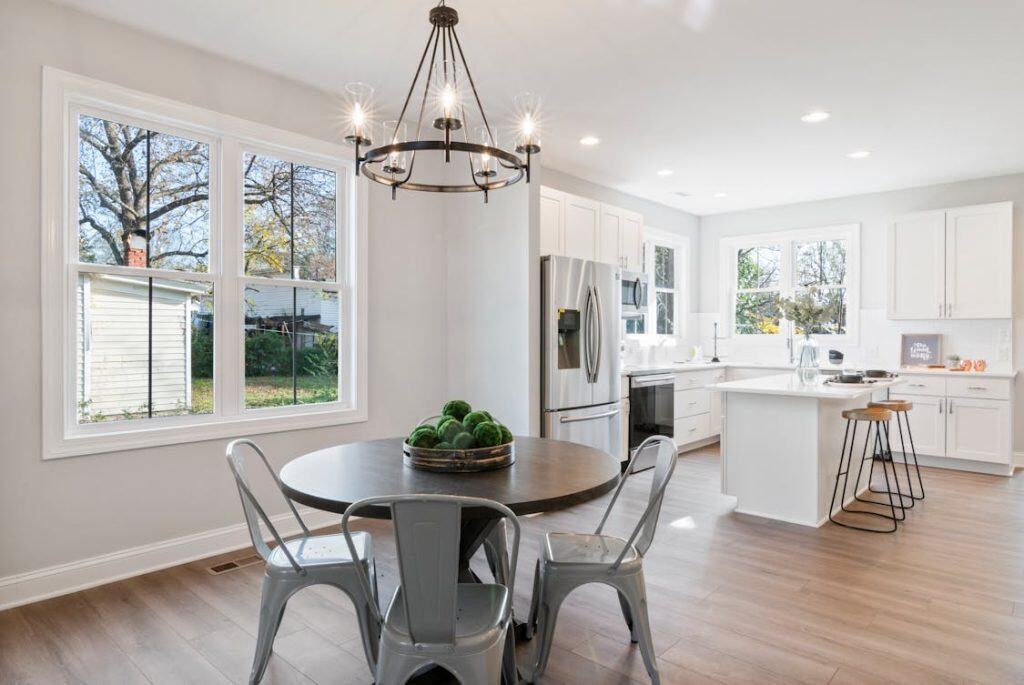The concept of flow, rooted in psychology, represents a state of heightened focus and immersion in an activity. When applied to modern house layouts, this idea can significantly impact how we experience our living spaces.
Understanding how flow manifests in home design opens up new avenues for creating environments that enhance well-being.
The Essence of Flow
Flow is often characterized by feelings of joy and fulfillment, where time seems to vanish. In a home, achieving flow involves creating a seamless transition between spaces.
This can mean considering how one room connects to another, ensuring that pathways are intuitive and inviting. When movement through a space feels effortless, occupants are more likely to feel at peace and engaged.
Architectural Elements that Foster Flow
Incorporating open floor plans is a common technique to promote flow. By minimizing barriers, such as walls and doors, these designs encourage natural movement. However, it’s not just about openness; the placement of furniture and decor plays a crucial role.
Aveling Homes, for example, often showcase layouts that strike the right balance between openness and comfort, helping families enjoy seamless transitions between living spaces.
The Role of Natural Light
Natural light is another vital aspect that influences flow. Homes designed with ample windows allow sunlight to pour in, fostering a sense of connection to the outdoors.
This not only enhances the visual appeal but also boosts mood. Large windows or strategically placed skylights can create a bright, airy atmosphere that nurtures positive feelings.
Color and Texture: Setting the Mood
Color choices in a home can significantly impact emotional responses. Soft hues can create a calming effect, while bold colors may invigorate a space. Textures, too, play a role in this psychological dance.
Smooth surfaces can evoke tranquility, while rough textures may add warmth and depth. Balancing these elements can enhance the overall flow, making each space inviting and harmonious.
Spatial Organization: Making Sense of Space
The way spaces are organized influences how individuals interact with their environment. A well-thought-out layout takes into account the activities performed in each area.
For instance, placing the kitchen near the dining area allows for a seamless transition from cooking to eating. This spatial logic aids in reducing friction, allowing inhabitants to engage more fully in daily life.
Personalization and Its Impact on Flow

Personal touches in a home contribute greatly to the sense of flow. When inhabitants see their interests reflected in their surroundings, they feel a stronger connection to the space.
This can be achieved through artwork, family photographs, or even curated collections. These elements not only enhance aesthetics but also create a narrative that encourages emotional engagement.
The Importance of Outdoor Spaces
Outdoor areas are an extension of the home and can significantly improve flow. Gardens, patios, or balconies provide a breath of fresh air and contribute to mental well-being.
These spaces can serve as retreats, offering a connection to nature that complements indoor living. A well-integrated outdoor area encourages people to move between environments, enriching their overall experience.
Soundscapes and Environmental Harmony
Sound is a critical but often overlooked aspect of flow in home design. The acoustic environment can either promote tranquility or create distraction.
Thoughtfully designed homes can incorporate sound-absorbing materials or strategically placed features to enhance auditory comfort. Water elements, like fountains, can provide soothing background sounds, contributing to a serene atmosphere.
Technology: The Digital vs. Physical Flow
In a tech-savvy world, the integration of technology into home design brings both challenges and opportunities. Smart home features can enhance convenience, allowing for seamless transitions between tasks.
However, it’s essential to ensure that technology does not overwhelm the physical experience. Striking a balance ensures that inhabitants remain present and engaged in their surroundings.
Community and Social Flow
The layout of a home can foster social interaction, creating opportunities for connection. Spaces designed for gathering, such as open kitchens or communal living areas, can encourage family and friends to spend time together.
The flow of social interactions within a home is just as important as physical flow, promoting a sense of belonging and community.
Flexibility in Design: Adapting to Change
Modern living often requires adaptability. Spaces that can transform to meet various needs—such as a home office that doubles as a guest room—can enhance flow.
Flexibility allows inhabitants to navigate their lives more efficiently, reducing stress and promoting a sense of control over their environment.
Cultural Influences on Flow
Cultural backgrounds can influence perceptions of flow in design. Different cultures prioritize various aspects of home life, from communal spaces to personal retreats.
Understanding these cultural nuances can help designers create spaces that resonate with diverse populations, fostering a sense of belonging and flow unique to each individual’s experience.
Psychological Benefits of Flow in Home Design
Embracing the principles of flow in home layouts leads to several psychological benefits. Enhanced focus, reduced stress, and improved mood are just a few advantages.
When individuals feel comfortable in their environments, they are more likely to thrive, both personally and professionally. This connection between environment and mental health is increasingly recognized in contemporary design practices.
As we explore the intricate relationship between psychology and home design, it becomes clear that flow is more than just a buzzword. It is a guiding principle that can transform how we experience our living spaces.
By focusing on the elements that foster flow, we can create homes that nurture well-being and promote a fulfilling lifestyle. The ongoing quest to enhance our environments continues to reveal the profound effects that thoughtful design can have on our lives.


